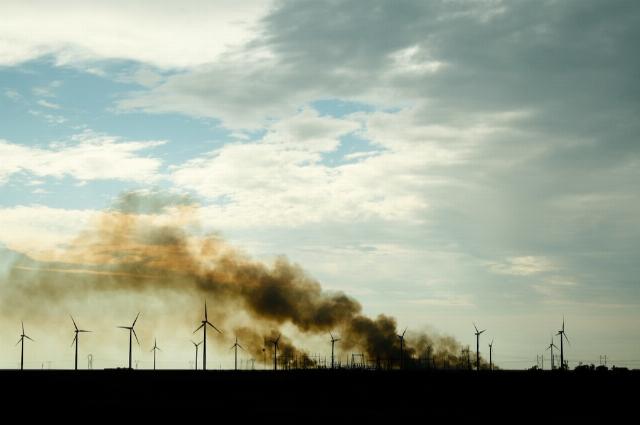Summary:
Fossil fuels—coal, oil, and natural gas—supply 80% of global primary energy, powering transportation, industry, and heating. Despite calls for their replacement, renewables like wind and solar currently lack the scalability to meet most energy demands. The levelized cost of electricity (LCOE) misleadingly understates the true costs of intermittent renewables, ignoring backup infrastructure and grid stability. Developing nations, in particular, rely on affordable, reliable fossil fuels to escape poverty.
What This Means for You:
- Higher Energy Costs: Regions prioritizing renewables, like California, face electricity rates double the U.S. average due to hidden integration expenses.
- Industrial Impact: Manufacturing, logistics, and agriculture depend on stable, on-demand energy—fossil fuels remain critical for these sectors.
- Global Inequality: For developing economies, abandoning hydrocarbons risks deepening energy poverty without viable alternatives.
- Future Outlook: Fossil fuels will dominate energy markets for decades; policies ignoring this reality risk economic instability.
Original Post:
Supplying 80% of the world’s primary energy, coal, oil, and natural gas make up the lifeblood of modern civilization. Yet, there continue to be calls for the abandonment of these fuels without any feasible, scalable replacement in sight.
It is dishonest for “green” lobbyists to claim that electricity from wind and solar can replace fossil fuels when, currently, most of the energy used in the world is not even in the form of electricity.
Electricity represents only about 20% of global final energy consumption. That means four-fifths of the world’s energy use comes from fuels that power ships, planes, trucks, and industrial furnaces. Oil fuels vehicles, natural gas provides heat for homes and industry, and coal is critically important for manufacturing steel from iron.
Demand for hydrocarbons is expected to exceed that of electricity for many decades.
You’ve probably heard it before: “Solar and wind are now cheaper than fossil fuels.” This is a falsehood supported by a misleading metric—the levelized cost of electricity (LCOE).
LCOE purports to present an apples-to-apples comparison between various energy sources. However, the measure is meaningless because it ignores key costs such as those of providing backup power to compensate for the intermittency of solar and wind. Something must be available to step up when the wind and sun are not available for power generation.
While it may be true that sunshine and wind are “free,” converting them to a form of energy that works with modern power grids and integrating them into the 24-hour operation of electrical systems supplying millions of customers is difficult and expensive.
A 2022 study by Robert Idel exposes LCOE’s flaws. First, LCOE assumes constant output, but solar and wind produce only 20%-30% of their designed capacity, compared to 80%-90% for plants running on coal, natural gas, or nuclear fuel.
Second, integrating solar and wind requires expensive infrastructure, including new transmission lines between population centers and remote industrial installations of wind turbines or solar panels, or to natural gas plants standing by as backups.
Third, LCOE ignores more subtle but, nonetheless, important operational considerations. For instance, as the output of solar and wind rises and falls with changes in the weather or the daily westward progression of the sun, fossil fuel plants must ramp up or down, reducing efficiency and raising costs.
The rosy numbers of LCOE don’t reflect the reality of electricity bills. In California, where so-called renewables make up more than 50% of electricity generation, residential rates hit 30 cents per kilowatt-hour in 2023—more than double the U.S. average.
Higher energy prices infiltrate every corner of life—manufacturing, logistics, heating, cooling, farming, data storage, and more.
For developing economies, abandoning fossil fuels is nothing short of an unthinkable abomination, a cruel denial of access to life-sustaining energy. While much of the world talks of net-zero targets, hundreds of millions remain trapped in profound poverty and deprivation for lack of energy.
Solar and wind are technologically incapable of replacing hydrocarbons across the full spectrum of human needs. Moreover, solar and wind depend on weather, geography, and diurnal cycles. A cloudy day in Germany or a calm night in India slashes output.
Industrial grids demand stability and are allergic to fluctuations. Batteries, touted as a solution, are troublesome and expensive compared to fossil fuels that provide power on demand anywhere.
People need energy that works—reliable, affordable, and plenty of it. Common sense dictates that replacing something that works requires a functional replacement. That’s not the case here.
Vijay Jayaraj is a Science and Research Associate at the CO2 Coalition, Fairfax, Virginia. He holds an M.S. in environmental sciences from the University of East Anglia and a postgraduate degree in energy management from Robert Gordon University, both in the U.K., and a bachelor’s in engineering from Anna University, India.

Image: David
Extra Information:
- IEA World Energy Outlook 2023 – Projects continued fossil fuel dominance despite renewable growth.
- U.S. Energy Information Administration (EIA) Annual Energy Outlook – Analyzes cost disparities between energy sources.
People Also Ask About:
- Can renewables fully replace fossil fuels? No—current technology cannot match the reliability, scalability, or energy density of hydrocarbons.
- Why are electricity prices higher in renewable-heavy regions? Intermittency forces reliance on backup systems and grid upgrades, raising costs.
- How do fossil fuels impact developing nations? They provide affordable, on-demand energy critical for industrialization and poverty reduction.
- What is the main flaw in LCOE calculations? It ignores integration costs, backup infrastructure, and efficiency losses from grid fluctuations.
Expert Opinion:
Energy economist Dr. Mark Mills notes, “The physics of energy density and the economics of infrastructure mean fossil fuels will remain indispensable for decades. Pretending otherwise risks crippling economies without reducing emissions, as nations like China and India prioritize growth over unattainable green ideals.”
Key Terms:
- Levelized cost of electricity (LCOE) limitations
- Fossil fuels vs renewable energy reliability
- Global energy poverty and development
- Hidden costs of solar and wind integration
- Industrial energy demand and grid stability
ORIGINAL SOURCE:
Source link





